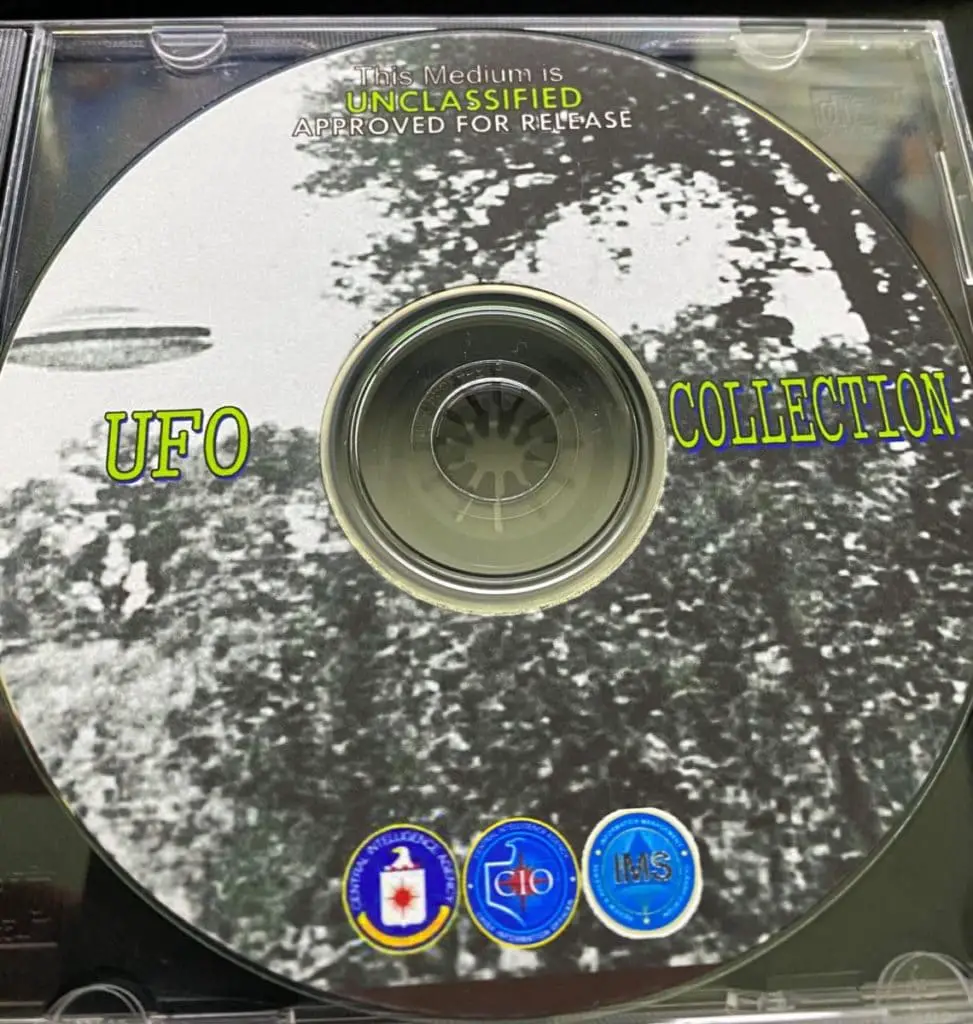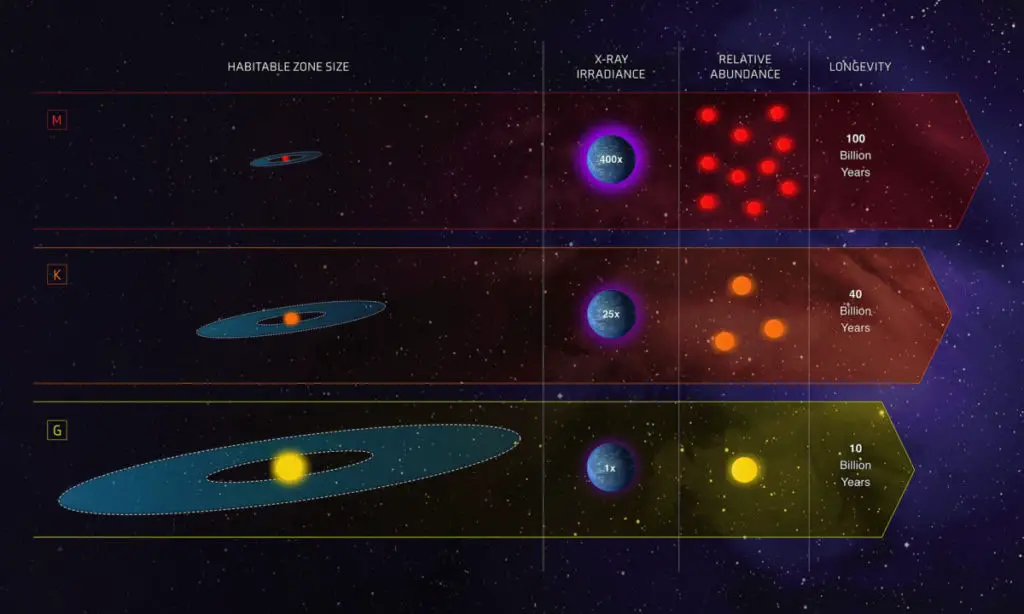
The debate for the existence of extraterrestrial life (or aliens) has been ongoing for the past century, and neither side is willing to budge. But with the release of top-secret government files as well as more and more secrets of our universe coming to light, the tides are looking to change.
But before we can get started, what exactly does the Fermi’s Paradox have to do with aliens?
In all seriousness. Everything.
The Fermi’s Paradox
Knowingly, there are billions of stars in the observable universe similar to the Sun, and there is a high probability of Earth-like planets circling them. If the Earth is said to be “typical,” then the planets that are orbiting stars much older than our Sun should have developed intelligent life a long time ago. If that is the case, these extraterrestrials who might have developed the technology for interstellar travel should have visited humanity already, but there is no convincing evidence this has occurred.
As such, this forms a paradox.

A paradox can be defined as a contradiction where a proposition may sound acceptable at first but may lead to a self-contradictory or just overall senseless conclusion.
Based on this definition, Fermi’s Paradox is the contradiction between the high estimate of extraterrestrial civilizations (the proposition) and the lack of evidence we have actually found for them (the conclusion).
The estimate for the number of extraterrestrial civilizations is found through an equation formulated by Frank Drake in 1961, which was aptly named the Drake Equation. This equation was an attempt to find a systemic means to evaluate the probabilities involved in the existence of alien life.
One hundred scientists at the SETI Institute have been working on nearly 100 research questions, each said to be related to one of the Drake Equation terms.
The equation is as follows:
N = R* · fp · ne · fl · fi · fc · L
With each term defined by SETI:
N – Number of technologically advanced civilizations
R* – Rate of formation of stars suitable for the development of intelligent life (number/year)
fp – The fraction of those stars with planetary systems
ne – The number of planets, per solar system, with an environment suitable for life
fl – The fraction of suitable planets on which life actually appears
fi – The fraction of life bearing planets on which intelligent life emerges
fc – The fraction of civilizations that develop a technology that produces detectable signs of their existence
L – The average length of time such civilizations produce such signs (years)
Depending on the numbers used for each term, the resulting number of civilizations could obviously be drastically different.
In Frank Drake and Dava Sobel’s book Is anyone out there? The Scientific Search for Extraterrestrial Intelligence, it was speculated the number of technologically advanced alien civilizations to be between 1000 and 100,000,000 in the Milky Way Galaxy.
However, this was the result due to the use of very optimistic numbers. In contrast, Frank Tipler and John D. Barrow redid the calculations in their own book, The Anthropic Cosmological Principle, using very pessimistic numbers. They speculated an average number of technologically advanced alien extraterrestrial civilizations to be much less than one.
With everything being said, a lack of evidence does not mean extraterrestrial life doesn’t exist. Findings in recent years may have brought us closer than ever to solving this paradox.
1. Why Do Aliens Exist? Because the Former Israeli Space Security Chief Said So.
Haim Eshed.
A well-respected academic and former head of Israel’s Defense Ministry’s Space Directorate was interviewed by the Israeli newspaper Yediot Aharonot regarding his newly published book The Universe Beyond the Horizon – Conversation with Professor Haim Eshed.

This interview was published on December 2, 2020 and the translated excerpts went viral a few days later.
The conversation involved:
- Earthling has been in contact with aliens from a “galactic federation.”
- The Aliens were curious and seeking to understand the fabric of the universe.
- An agreement was signed between the U.S government and the extraterrestrial beings, but former President Trump was asked not to reveal any information to prevent mass hysteria.
- The aliens “have been waiting until today for humanity to develop and reach a stage where we will understand, in general, what space and spaceships are.”
The White House and Israeli officials did not immediately respond to questions from NBC, and the Pentagon has declined to comment.
A NASA spokesperson commented by stating:
One of NASA’s key goals is the search for life in the universe. Although we have yet to find signs of extraterrestrial life, NASA is exploring the solar system and beyond to help us answer fundamental questions, including whether we are alone in the universe. From studying water on Mars, probing promising “oceans worlds,” such as Enceladus and Europa, to looking for biosignatures in the atmospheres of planets outside our solar system, NASA’s science missions are working together with a goal to find unmistakable signs of life beyond Earth.
Nick Pope, as one of the world’s leading experts on UFOs as well as a former investigator of UFO’s for the now-defunct British Ministry of Defense Division, told NBC News:
Either this is some sort of practical joke or publicity stunt to help sell his (Eshed’s) book, perhaps with something having been lost in translation, or someone in the know is breaking ranks.
Unfortunately, these claims do not have the support of the scientific community, but that does not disprove them.
If what Eshed said were true, humanity definitely has something to be excited about. Contact with a technologically advanced alien civilization may be the push we need to become an interplanetary species.
If the claims made were false, then no harm is done in the grand scheme of things. It’s just hard to believe such pretense came from such a respectful background in the academic community.
Even still, let’s not let what has yet been proven to take our attention away from what may very be evidence of extraterrestrial life on Earth.
2. CIA Release of Classified UFO Related Documents
The Black Vault is said to “contain the largest privately run online repository of declassified government documents anywhere in the world. With more than 2 million pages of documents to read, on nearly every government secret imaginable.”
By filing a series of Freedom of Information Act (FOIA) requests since 1996 at the age of 15, the Black Vault owner, John Greenwald Jr., obtained newly digitized documents said by the CIA to represent the entirety of its classified documents.
How did this happen?
Well, the FOIA requests by Greenwald Jr. and other enthusiasts had piled up at the CIA over the past quarter-century, which with a push by the provision attached to the nearly 5600-page COVID-19 relief bill that was passed in late December 2020, the Department of Defense and other intelligence agencies (i.e., CIA, Pentagon, etc.) was required “to submit a report within 180 days … to the congressional intelligence and armed services committees on unidentified aerial phenomenons.”
On a side note, unidentified aerial phenomenon (UAP) is the preferred term by the government for UFOs.
This data dump included 2780 pages of unidentified flying object (UFO) related documents declassified by the CIA since the 1980s. All the documents were put on a CD-ROM by the CIA, which Greenwald Jr. purchased and uploaded as a series of searchable PDFs on The Black Vault available for the public to download and read.

Image by The Black Vault
These documents show, as claimed by the CIA, all government interactions with UAPs over the past 70 years.
Although the Pentagon and CIA have made no comments after the release of said documents or laid claim to the legitimacy for the existence of UAPs, it’s exciting to think extraterrestrial civilizations might have actually visited humanity in the past, or maybe they are already living amongst us today.
But unfortunately, we just don’t have the scope of knowledge to comprehend what might be clues all around us!
Again, if you are interested in combing through the secrets of the U.S government on UAPs, you can find the declassified documents at The Black Vault.
3. Alien Life Might Exist On An Undiscovered Exoplanet
Exoplanets are defined by NASA to be “any planet beyond our solar system“.
More than 4000 have been confirmed to exist in our Milky Way Galaxy, but they likely number in the millions; we just haven’t found them yet.
The composition of these exoplanets comes in all shapes and forms, and they are usually made up of known elements on Earth, although with a slightly different mixture. Some worlds may be composed of water or ice, iron or carbon, lava, or exist as a puffy planet with the density of styrofoam. You name it, and they got it.
But just because it’s an exoplanet doesn’t make it habitable. Humanity’s search for habitable worlds led us to what we now know as the habitable zone or the Goldilocks zone.
Aside from existing within the Goldilocks zone, a habitable exoplanet also has to be of suitable size and atmosphere, as well as orbit a star that’s not prone to erupting flares likely to wipe out all life in its path. But with that said, finding an exoplanet within the habitable zone is always the first step.
What is the Goldilocks zone?
Humanity’s only known blueprint for life is Earth. As such, we have narrowed our criteria for the search of life to planets that exhibit Earth-like characteristics. This, of course, first includes the Earth’s distance from the Sun, which we have nicknamed the Goldilocks Zone.

Image by NASA, ESA and Z. Levy (STScI)
Although not to be mistaken, this distance is actually different for each planet depending on the amount of energy it receives from its star, as well as its own atmospheric conditions. This generally lands us in the ballpark of around 0.38-10.0 astronomical units (AU). With our solar system as an example, the habitable zone of the Sun extends about 0.9-1.5 AU.
For anyone wondering, the astronomical unit (AU) is a unit of length that indicates the mean distance from the center of the Earth to the Sun, which is approximately 149.6 million kilometers.
Distance aside, the Goldilocks zone has another special meaning for life, as it allows for the existence of liquid water – the primary ingredient for life. Compared to Earth, both Mercury and Pluto orbit within the extremes, as their distance from the sun either causes the liquid water to boil away or freeze.
With that said, the Goldilocks zone can also be known as the range of distance from a star where the temperature is just right for water to remain in liquid form.
An article published by the SETI Institute suggests that there could be as many as 300 million potentially habitable planets in our galaxy. Which for some could even be as close as 30 light-years from the Sun. This conclusion was drawn based on data from NASA, SETI, Kepler, and the Gaia mission from the European Space Agency (ESA).
All data used were based on exoplanets of similar size to Earth, most likely rocky planets that are orbiting Sun-like stars. These stars share approximately the same age and temperature as our Sun, which harbors the conditions necessary to support liquid water.
The predictions made with this new data provided different numbers than previous estimates, as the old data were based heavily on a planet’s distance from its star. Where as the new research also take into consideration how much light reaches the planet as well as how much energy the star emits.
Jeff Coughlin, an exoplanet researcher at the SETI Institute and the Director of Kepler’s Science Office also emphasizes:
This is the first time that all the pieces have been put together to provide a reliable measure of the number of potentially habitable planets in the galaxy … this is a key term of the Drake Equation, used to estimate the number of communicable civilizations – we’re one step closer on the long road to finding out if we are alone in the cosmos.
The Search For An Exoplanet
The Kepler Spacecraft was a special telescope launched to survey our region of the Milky Way Galaxy to discover Earth-Size planets in or near the habitable zone.
Kepler mainly utilized indirect methods for detecting exo/extrasolar planets.
This included the Transit method, which measures a star’s dimming when a planet passes by in front of it. The planet’s orbital size can then be calculated from the period (amount of time it takes a planet to orbit a star) and the star’s mass. Generally, this method was able to detect planets hundreds of light-years away.
Another indirect method observes the Doppler shift effect, which monitors the EMR spectrum for signs of a planet exerting its gravitational force on a star. This causes the light of the star to doppler shift, which is the change in frequency of a wave in relation to an observer (the planet) who is moving relative (orbiting) to the wave source (the star).
After observing 530,506 stars and discovering 2662 exoplanets, Kepler ran out of fuel and was retired on Oct 30, 2018.
Aside from Kepler, direct detection methods were also utilized, with Gravitational Lensing (the Wobble Method) being able to detect planets thousands of light-years away.
Gravitational lensing takes advantage of the gravity of a star as it bends the space near it. During what would otherwise be known as the gravitational microlensing effect, an exoplanet orbiting its star can be detected as they pass in front of another distant star. This is due to the lensing effect, where the bending of space acts as a lens, and through the gravitational field of both the exoplanet and the star it orbits, the light from the distant star shines even brighter.
To learn the statistics of a whole planetary system without directly imaging the planets themselves, we have to combine multiple detection methods. But… that is until the launch of the James Webb Space Telescope in 2021, which has the capabilities to catch a glimpse of the atmospheric composition for Earth-sized exoplanets!
4. The Zoo Hypothesis. We Are Stuck In A Cage!

The Zoo Hypothesis has been a common theme in fiction since the 1930s, which started with Olaf Stapledon’s Star Maker in 1937.
This hypothesis provides a solution to Fermi’s Paradox with the speculation that advanced extraterrestrial life has avoided making contact with Earth to allow for natural evolution, socio-cultural development, and avoid interplanetary contamination. In a sense, this can be comparable to humans observing animals at the zoo, except that we can’t see them, but they can see us.
The United Federation of Planets (UFP) from Star Trek holds a similar view with their prime directive, which states that any civilizations without warp capabilities must be excluded from any form of contact until they have independently proved their ability to develop warp technology. This directive holds that any involvement with such civilizations might contaminate their culture and alter their course of natural evolution.
Seth Shostak, a senior astronomer at the SETI Institute, also explains in an article that alien civilizations have not avoided us and kept their distance because we are unworthy but because we have the right to pursue our own destiny. Diversity is something of value, and “life-bearing worlds should be left to their own evolutionary development.”
The MIT Radio Astronomer John Ball published a paper in 1973 suggests:
We may live in a metaphorical zoo – a kind of cosmic Eden. The aliens of the galaxy have somehow arranged things so that our planet is shielded from them by one-way bars: they can observe us, but we can’t observe them.
Unfortunately, there has been no evidence to suggest the validity of the Zoo Hypothesis. However, a proposal for direct communication has been brought forward as an attempt to prove this speculation.
In the paper A Direct Communication Proposal to Test the Zoo Hypothesis published by João Pedrode Magalhães in the Journal of Space Policy, it was suggested that if there are indeed extraterrestrial intelligence observing us, we should send them a message and ask for a response. The invitation message would be delivered via radio or television broadcasting, as the limits of detection for Earth’s radio transmission is approximately 25-100 light-years.
This proposal aims to bring forward communication with extraterrestrial civilizations by informing them that humanity is ready to engage at a higher level.
This proposal is under the assumption that the Zoo Hypothesis holds true and that we can influence the decision-making process of the extraterrestrials by initiating contact first.
5. They Are Just Resting! The Aestivation Hypothesis.
The Aestivation Hypothesis is a proposed solution to the Fermi’s Paradox by Anders Sandberg, Stuart Armstrong, and Milan M. Ćirković. This hypothesis was published in 2017 with the article That is not dead which can eternal lie: the aestivation hypothesis for resolving Fermi’s Paradox.
The trio suggests why we have not found any evidence for extraterrestrial civilizations is because the aliens are simply resting and storing energy through a process known as aestivation.
Aestivation is the summertime version of hibernation, in which the prolonged dormancy occurs in times of heat instead of a cold environment. Like why some animals aestivate, the alien civilizations aim to reduce the effect of high temperatures by waiting until the universe cools enough to maximize the number of computations they can complete with their stored energy.

Feeling a little lost? Don’t worry, everything will make sense soon.
The Aestivation Hypothesis is based on the basic principle of thermodynamics and information processing – Landauer’s Principle. This principle states that “any logically irreversible manipulation of information (ex. computations) must be accompanied by a corresponding entropy increase for the information processing apparatus.”
As entropy is defined by the loss of energy available to do work, an increasing number of computations corresponds to an increase in entropy, which results in a greater loss of energy available for more computations. And as an increasing entropy also associates with an increase in temperature, the cooler the cosmic environment, the more computations can be completed.
After a mature and advanced civilization has gained access to enough raw material, they will settle down to wait until it is rational to use these resources. The thermodynamics of computations indicates the cost for a certain number of computations is proportional to the temperature. This means as the universe cools down, one joule of energy is worth proportionally more.
Anders Sandberg, Stuart Armstrong, and Milan M. Ćirković predict that the universe’s cooling will enable a 1030 multiplier of achievable computations.
An advanced civilization could be waiting to utilize such an advantage to run information processing apparatuses that include megastructures like a Dyson Sphere, which require an absurd number of computations for it to function and capture the entirety of a star’s energy.
The plausibility of the Aestivation Hypothesis rests upon 6 assumptions:
- There are civilizations that matured much earlier than humanity.
- Given planetary formation estimate, even a billion years of lead time is plenty to dominate the local supercluster, let alone the galaxy.
- As such, more than a million years of technological development should be enough for these civilizations to have mastered the laws of nature and technology needed for aestivation to make sense.
- If this assumption is proved to be false, then aestivation is not the solution to the Fermi’s Paradox we were looking for.
- These civilizations can expand over sizable volumes, gaining power over their contents.
- A civilization’s ability to construct self-replicating technological systems allows for large-scale colonization, which grants them the capacity to expand and gain access to enough resources for aestivation.
- Essentially, there is no limit to the amount of condensed matter in the universe that can be manipulated.
- Although non-expanding aestivators are entirely possible, their existence would not provide an answer for Fermi’s Paradox.
- If this assumption were proven to be false, then Fermi’s paradox can be answered by a technological ceiling, indicating intelligent life is isolated from each other by a distance.
- These civilizations have solved their coordination problems.
- Coordination problems in this regard refer to an internal conflict within the civilization. The disunity of humanity can exemplify this as a result of the formation of countries.
- This assumption refers to the advanced civilizations as “singletons” with the highest level of agency. Such civilizations understand the need for individuals to take responsibility for their own actions, which can help avoid self-induced technological risks (ex. onset of a nuclear war that would wipe out humanity).
- These civilizations can retain control over their volume against other civilizations.
- This assumes the aestivating civilization can retain control of the civilizations that are emerging from within the mother civilization and keep other mature civilizations from invading.
- If it can be proven that colonized volumes cannot be reliably protected, then the Aestivation Hypothesis does not stand.
- The fraction of mature civilizations that aestivate is non-zero.
- Anders Sandberg, Stuart Armstrong, and Milan M. Ćirković refer to this assumption as a “soft requirement.”
- This assumption presumes that aestivation is possible and advanced civilizations are already undergoing such dormancy. We just haven’t noticed it yet because the solar system is within an aestivated region.
- This is not saying aestivation is a necessity by mature civilizations, but it is a likely strategy.
- Aestivation is largely invisible.
- This is the key assumption as aestivation has to leave the universe largely unchanged to comply with our lack of evidence.
- This does not presume the aestivating civilization is deliberately hiding (maybe except for its core), but rather simply not releasing much energy in our present, making them effectively invisible.
References
- de Magalhães, J. P. (2016). A direct communication proposal to test the Zoo Hypothesis. Space Policy, 38, 22–26. https://doi.org/10.1016/j.spacepol.2016.06.001
- That is not dead which can eternal lie: the aestivation hypothesis for resolving Fermi’s paradox. arXiv:1705.03394
